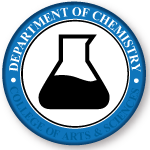Pyrimethamine Based Anti-protozoan Agents from Isostere and Heuristic Structure-similarity Search
© 2017 Bartzatt; This is an Open Access article distributed under the terms of the Creative Commons Attribution License (http://creativecommons.org/licenses/by/4.0), which permits unrestricted use, distribution, and reproduction in any medium, provided the original work is properly cited.
DOI: 10.9734/BJPR/2017/33205
Abstract
Aims: To generate new medicaments for control and treatment of the parasitic protozoan Toxoplasma gondii.
Study Design: Structure similarity search and isostere search was conducted over a broad range of structure categories. Correlation and highest similarity scores were implemented to select the best drug candidates.
Place and Duration of Study: University of Nebraska, Department of Chemistry, Durham Science Center, 6001 Dodge Street, Omaha Nebraska 68182, from June 2016 to February 2017.
Methodology: Utilizing pyrimethamine as the parent compound, a broad range of similar structures and isosteres were found by applying search methods. The compounds having the highest correlation and similarity scores were selected for the study of molecular properties. The molecular properties were determined and examined for underlying relationships by pattern recognition hierarchical cluster analysis and K-means cluster analysis.
Results: Thirty compounds were identified to have a very high level of structure similarity or isosteric relationship to pyrimethamine. The molecular structures and molecular properties are presented for all compounds, inclusive of pyrimethamine. Hierarchical cluster analysis and K-means cluster analysis indicated compounds with highest underlying similarity to pyrimethamine. Box plots showed the over-all distribution of important pharmaceutical properties, such as molecular weight, Log P, polar surface area, number of rotatable bonds, molecular volume, and number of hydrogen bond donors. Structure components are compared to elucidate potential clinical activity. Multiple regression is applied on all compounds to generate a numerical relationship for prediction of similar compounds. Save for only one isostere, all compounds showed zero violations of the Rule of 5, indicating favorable drug-likeness and bioavailability.
Conclusion: Thirty compounds highly analogous to pyrimethamine were identified following heuristic search course. The molecular properties were determined for all compounds and indicated genuine potential for treatment of toxoplasmosis. Correlation of structure and pattern recognition methods indicated 30 compounds of clinical potential and property analogy to pyrimethamine.

